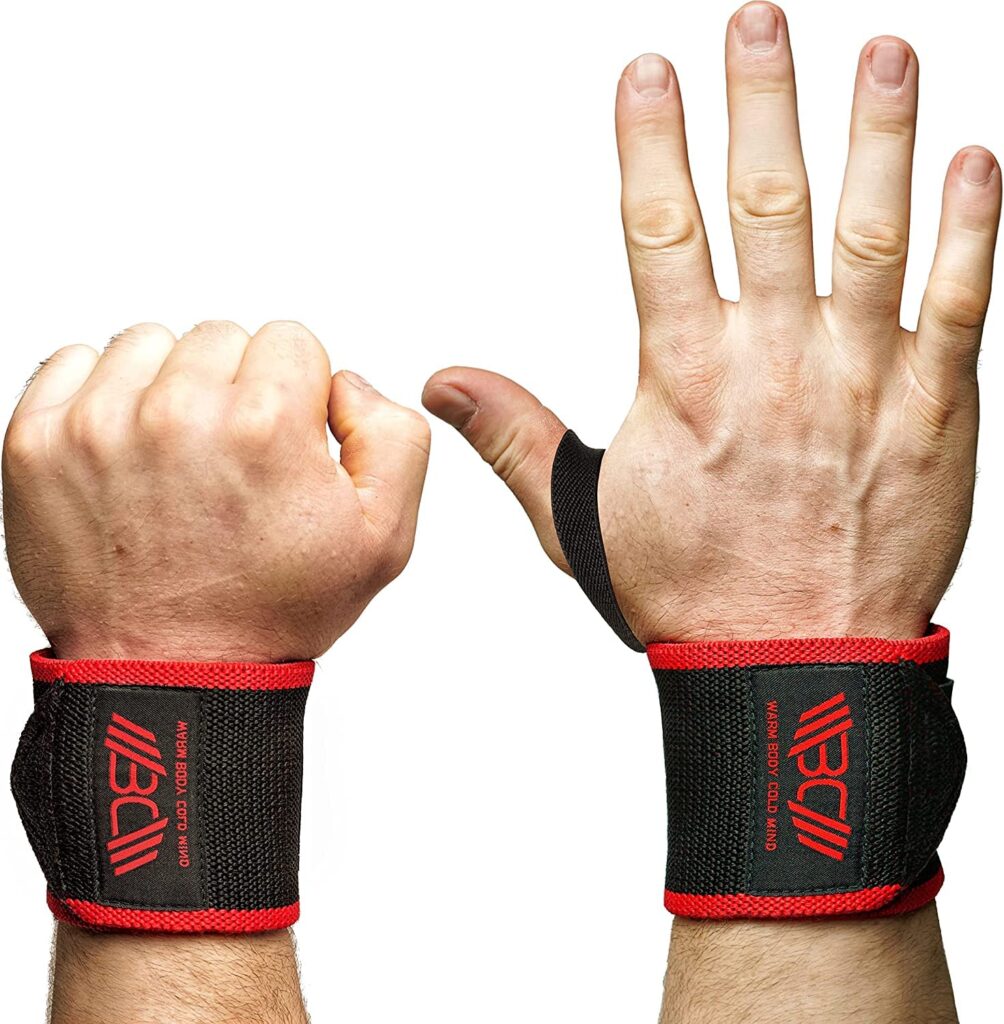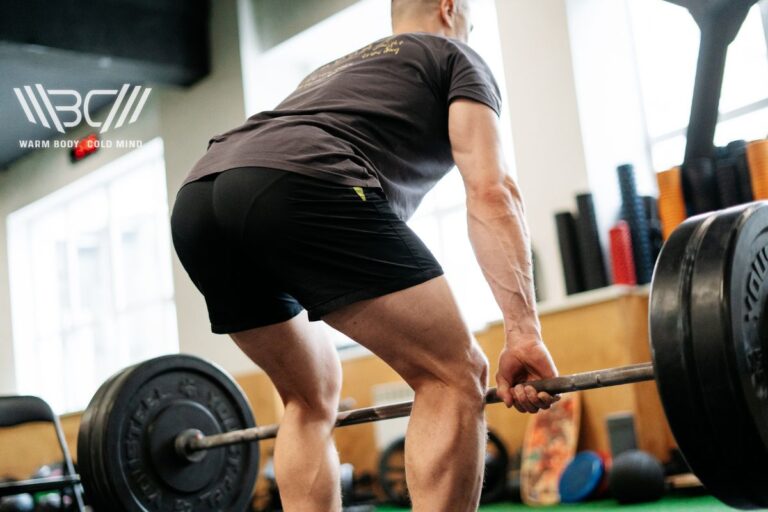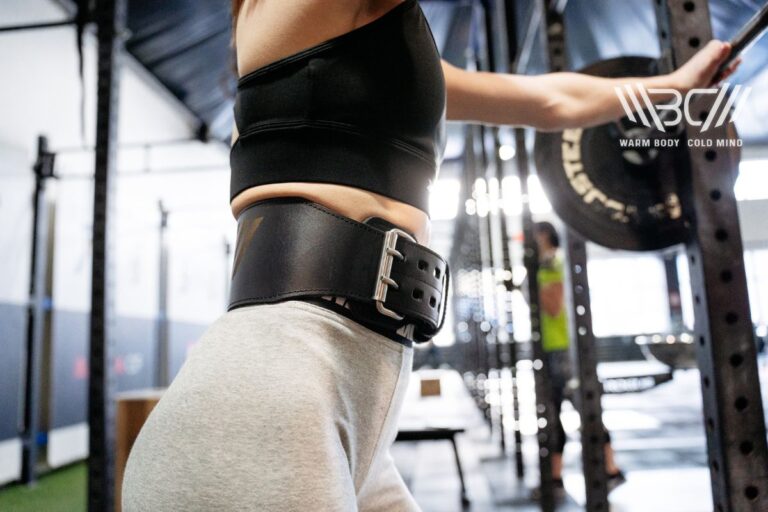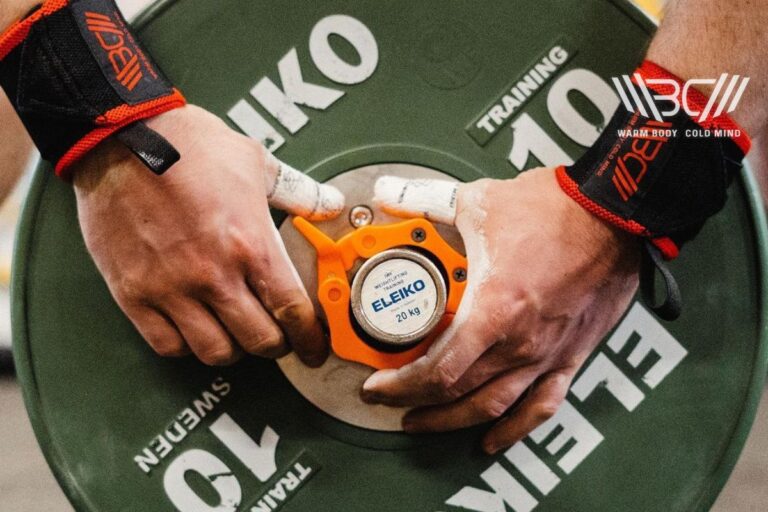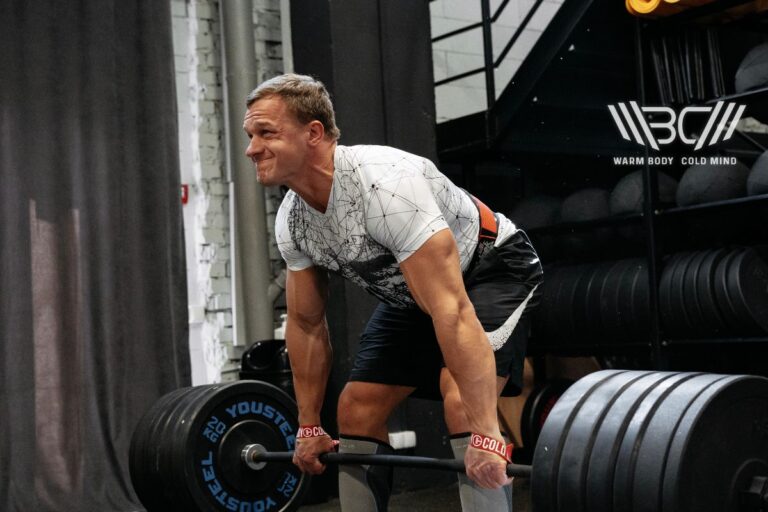Wrist Support for Push-Ups: Using Wrist Wraps for Strengthening
Who doesn’t know about push-ups? Even if you’re not that into working out, there’s no way you don’t know what push-ups are. They’re famous for their ability to target a lot of different muscle groups and strengthen your upper body. However, the strain push-ups can put on your wrists is something that often gets overlooked. That’s where wrist support for push-ups comes into play.
What is wrist support for push-ups? – This term refers to a variety of accessories and techniques that are designed to minimize wrist pain and discomfort during push-ups, such as: wrist wraps, wrist bands, push-up bars, and more.
“Wrist pain push-ups” is probably one of the most googled phrases when push-ups are considered. If you’ve ever tried to do a push-up, you have most likely sensed some sort of pain or discomfort in your wrists. But if your wrists are supported, then you’re able to strengthen your upper body safely and minimize the amount of discomfort you’re feeling.
We’ll go into depth on why wrist support is important when doing push-ups, what options there are as far as push-up wrist support goes and how to choose the right kind.
What Are Wrist Wraps?
If you’ve never heard of wrist wraps or don’t know a lot about them, you may think they’re just an overhyped accessory you wrap around your wrists to make you look cooler while working out. But that’s not the case – wrist wraps for push-ups are highly functional and effective.
Wrist wraps are tools designed to provide stability to your wrists and reduce the risk of injury and pain during a lot of different exercises – wrist support for planks, gymnastics, weightlifting, powerlifting, etc., can be a great help.
Wrist wraps are usually made of a strong, durable fabric (often with elastic properties) that secures around your wrist. The structural feature that sets wrist wraps apart is that they are able to offer adjustable compression and support to the wrist and they’re particularly beneficial for push-ups.
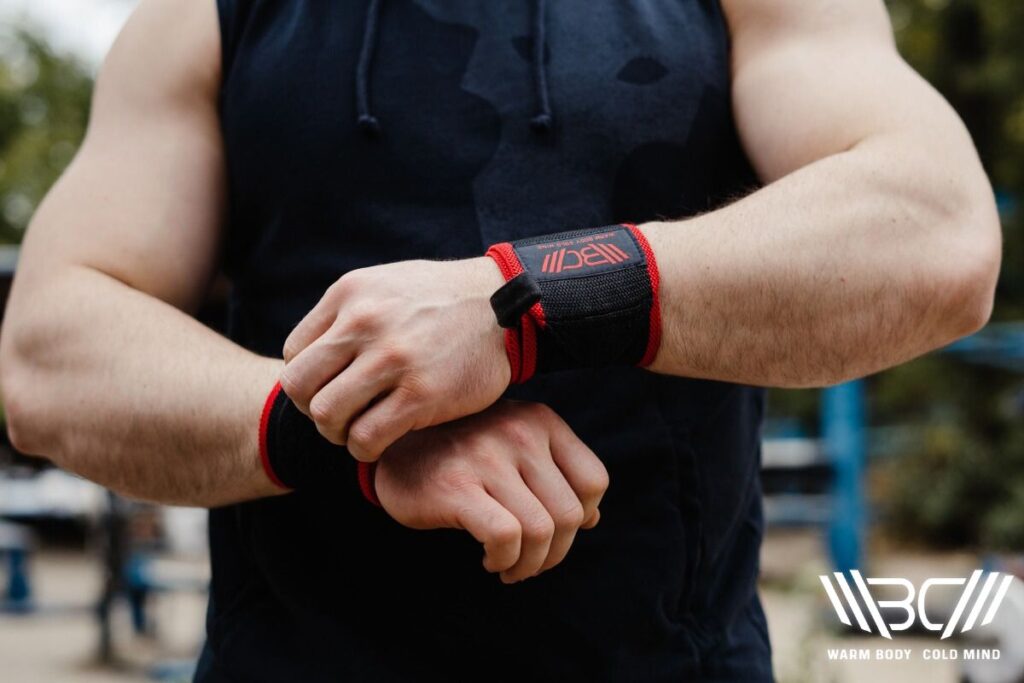
Wrists go through quite a bit of stress during push-ups, especially if they’re not performed with the correct form. This can cause a lot of discomfort or even pain and injury. With wrist wraps, however, the wrists have extra support that helps stabilize the joints – this reduces the risk of hyperextension or excessive bending during push-ups. It can also promote better wrist alignment.
You’ll normally see wrist support brace associated with strength exercises (like weightlifting or powerlifting), but it’s just as useful in bodyweight workouts, like push-ups. Since it minimizes the discomfort, you can focus on your form and on the exercise itself, without being distracted by the potential pain.

Secure your performance with our Velcro wrist wraps – the perfect blend of support and flexibility.
Who Should Wear Wrist Support for Push-Ups?
The first thing that comes to mind is, of course, ‘beginners’. Anyone that’s new to push-ups should have wrist support because it will help them adapt to the workout and it will also allow them to gradually build strength in their wrists.
But even those who are not beginners could get a lot of use out of wrist support, especially those who have prior wrist injuries or sensitive wrist joints.
Naturally, those who do workout routines that include a lot of push-ups should use some sort of wrist support as well.
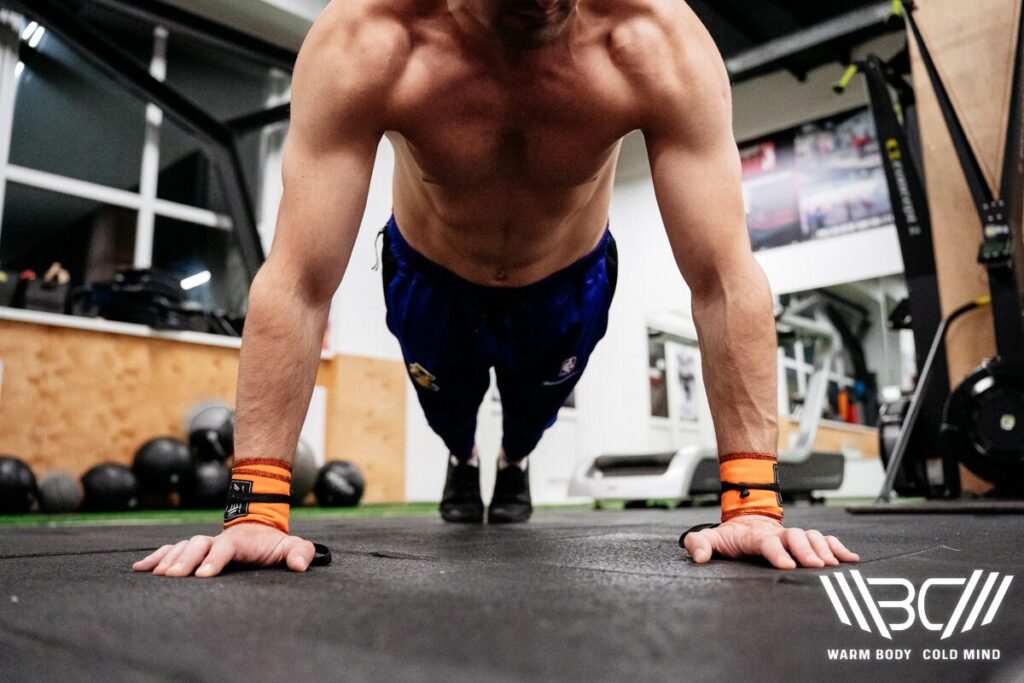
Who Should Not Wear Wrist Bands for Push-Ups?
As effective and beneficial as wrist bands (also known as a wrist brace for push-ups) are, they’re not for everyone and sometimes you need to use them carefully or avoid them altogether. Anyone considering wrist bands needs to make sure they have the correct fit and proper technique to avoid any strain or discomfort.
If you have an existing wrist injury or any kind of condition, it is absolutely essential you consult with your doctor first before using wrist support, or you risk worsening your issues.
Also, those who have push-ups as part of their physical therapy should also first consult with their therapist to check if wrist support will impact their rehabilitation process.
Lastly, people who have allergies or skin sensitivity should be careful when selecting wrist bands because they’ll need materials that won’t cause irritation and flare-ups.
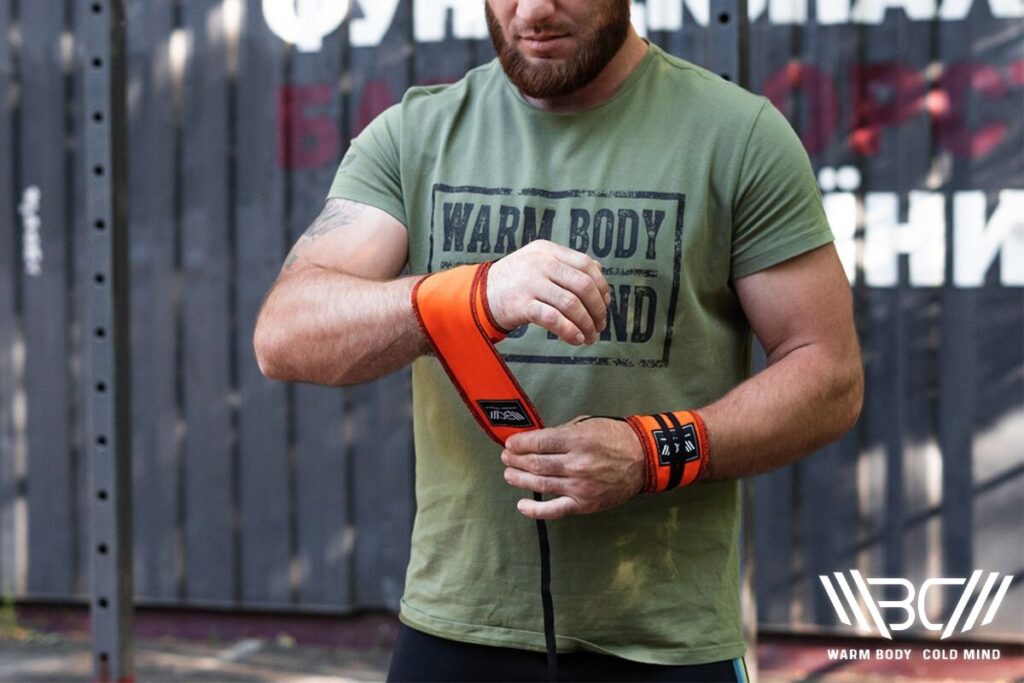
6 Reasons Why You Feel Wrist Pain During Push-Ups
There can be quite a few reasons for the pain you feel during push-ups, so let’s go over the seven most common ones.
1. Poor Wrist Alignment
If your wrists are not properly aligned with your shoulders and your hands are turned in or out, it can cause a lot of strain on your joints.
2. Lack of Flexibility
For the wrists to be able to handle the range of motion the push-ups require, they need to be flexible. If they’re not, you’ll feel discomfort or pain.
3. Overtraining
Push-ups are fantastic and they can do wonders for muscle mass and cardiovascular health. But, and there’s always a but lurking somewhere, too many push-ups can be an issue and can cause pain. Make sure to include a variety of workouts into your routine, and don’t focus solely on push-ups (or any exercise, for that matter).
4. Too Much Pressure
Your dominant arm might carry more weight during push-ups and uneven weight distribution is another cause of pain because you’re placing too much pressure on your wrists.
5. Not Warming Up
It’s important to warm up before any workout and you should prepare your wrists, too. You can do wrist rotations for a few minutes before you start working out. If you leave your wrists unprepared and then do a load of push-ups, you’ll likely feel a decent amount of discomfort.
6. Previous Injuries
Pre-existing injuries or conditions like carpal tunnel syndrome can make push-ups very painful.
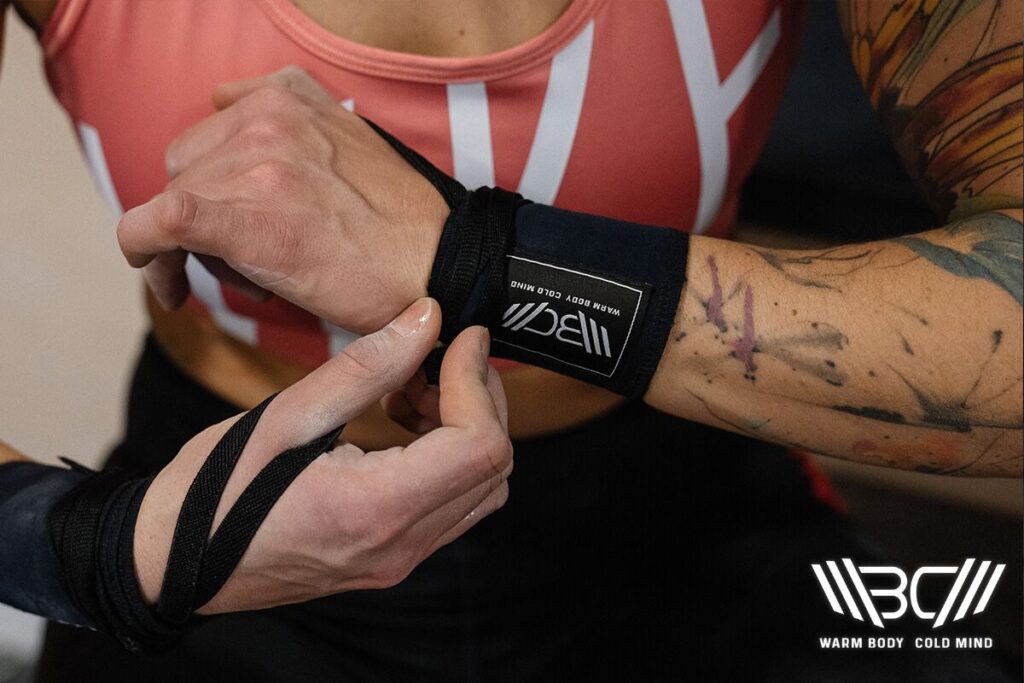
How to Eliminate Wrist Pain From Push-Ups?
This is a very common question, and the simplest answer is – you need to address both technique and wrist support.
You should evenly distribute your weight across the hands and fingers and avoid putting too much pressure on the wrists. Engaging your core can greatly help with this. Also, you need to maintain a straight line from head to heels.
As far as wrist support goes, a pair of wrist wraps will give you some extra support and reduce wrist flexion. Gradually increase the strength of your wrists through exercises and stretches and strengthen your forearm muscles to stabilize your joints.
Of course, the most important thing is to pay attention to what your body is telling you. If you’re feeling a stubborn kind of pain that won’t go away, you need to visit your doctor to see what’s going on.
7 Effective Ways to Support Your Wrists During Push-Ups
A lot of people avoid push-ups because their wrists are on the weaker side, but luckily, there are ways of making them stronger. There are also accessories that can help support them.
Don’t forget that you need to start with light resistance and gradually increase intensity – both in exercises and product usage.

1. Extensor Exercises
Do wrist curls with light dumbbells to strengthen your wrist muscles. Hold a weight in your hand with your forearm resting on a bench and then curl your wrist up and down.
2. Grip Strengthening
Squeezing a stress ball or using grip trainers can improve the stability of your wrists.
3. Finger Push-Ups
These will gradually build wrist strength. Start with partial body weight on your fingers and progress to full push-ups on your palms.
4. Wrist Extensions
Place your palms on a flat surface like a table or a desk. Your fingers should be pointing towards your body. Once your hands are in this (slightly weird) position, slowly lean so the angle between your forearm and the back of your hand should be decreasing as you’re doing this.
You should feel a gentle stretching sensation along the top of your wrists. Hold this position for a few seconds and then release.
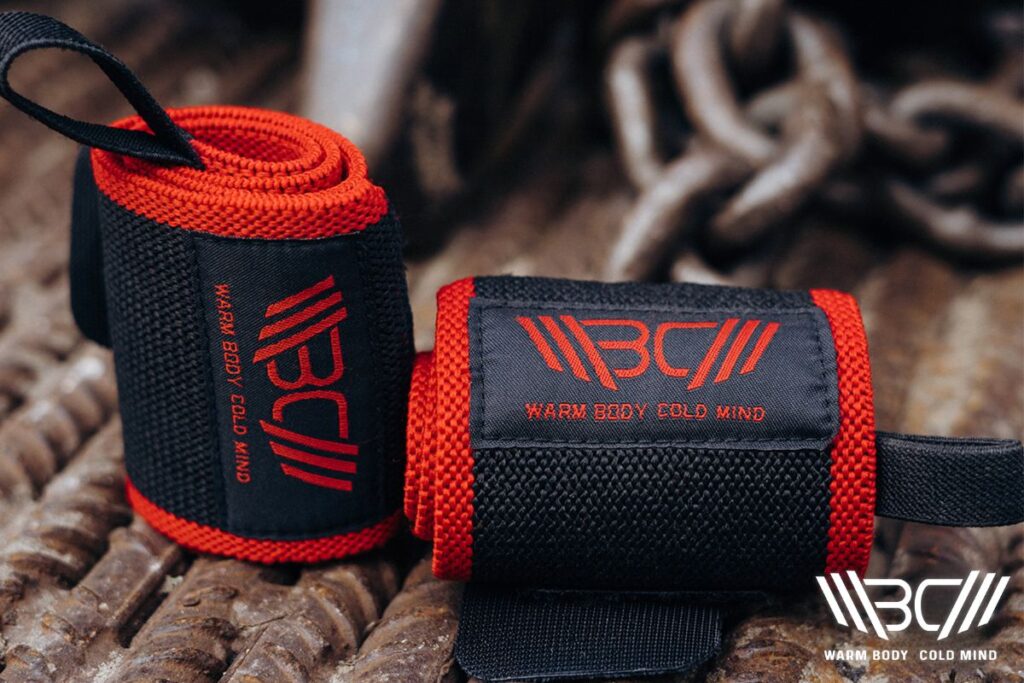
5. Wrist Wraps
Not that this is a surprise, but wrist wraps do a great job at supporting your wrists during push-ups. They can help reduce strain and maintain proper wrist alignment.
6. Push-Up Bars
These are another accessory that’s fantastic for reducing strain. They elevate your hands off the floor and allow your wrists to maintain a more neutral position.
7. Wrist Compression Sleeves
These will give you mild compression and warmth, which promotes blood circulation and reduces stiffness during push-ups.
Subscribe!
The latest reviews of must-have home gym training equipment, apparel, and supplements that will enhance your performance and bring you new results.
5 Alternatives to Using Wrist Bands During Push-Ups
You may not want to use traditional wrist wraps and that’s completely fine – there are a lot of alternatives you can use instead of them.
You may need to go through a few different ones to find the one that works best, but either way, your wrists will end up being less strained, and that’s the most important thing.
1. Parallettes
These are similar to push-up bars, but they’re longer and lower. They’re a stable platform for your hands during push-ups and they also reduce the strain on your wrists.
2. Fist Push-Ups
There’s no rule that says you absolutely have to do traditional push-ups. You can do fist push-ups, with your fists clenched instead of flat palms. This reduces the strain on your wrists and can be more comfortable for some people.
3. Hexagonal Dumbbells
Hold hexagonal dumbbells with the flat sides resting on the floor and grip the handles with your palms facing in. This way, your wrists will be in a more neutral position during push-ups.
Keep in mind, this is a pretty advanced move and if you’re a beginner, you should refrain from trying it or you may injure yourself.
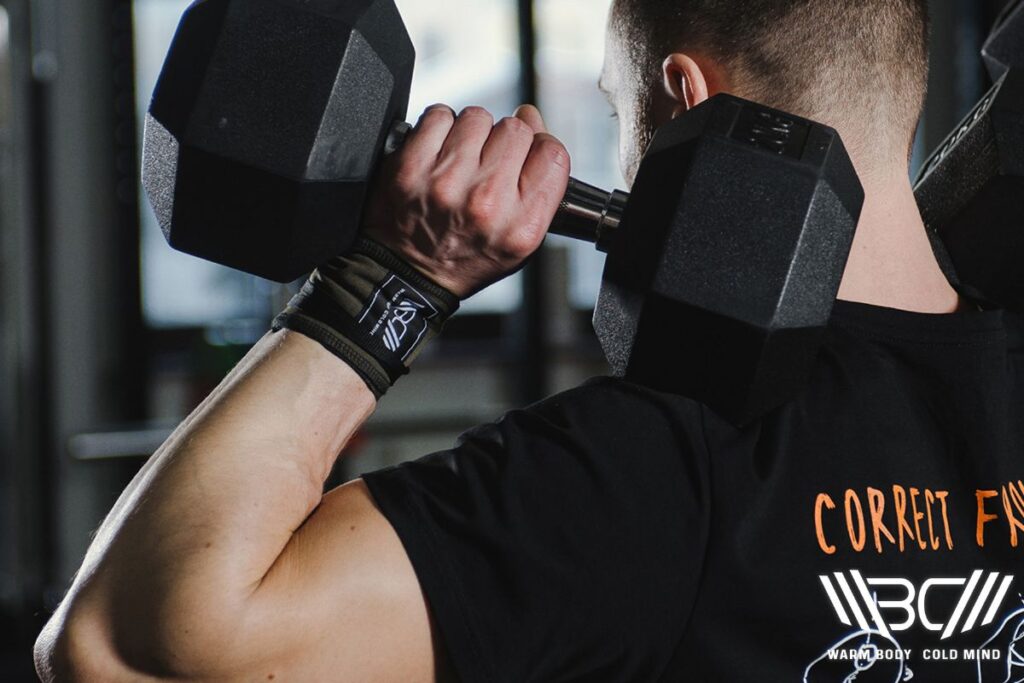
5. Yoga Blocks
Placing yoga blocks under your hands will reduce the strain on your wrists by reducing the angle of wrist extension. When you elevate the heel of your hand, the wrist is in a more neutral position, which decreases the stress placed on it.
Make sure you adjust the height of the blocks to a position that’s comfortable for your wrists.
6. TRX
TRX or suspension training systems allow you to do bodyweight exercises (including push-ups) with handles that hang from the straps. Much like with yoga blocks, if you decide on this option, make sure the height is adjusted to what’s comfortable for you.
8 Reasons Why You Should Use Wrist Wraps
Wrist wraps have a lot of benefits, so if you’re still doubting whether or not you need to invest in a pair, let’s go over a few reasons to see why they would be a great addition to your workouts.
1. Wrist Stability
Your wrists will be a lot more stable with a wrist guard for push-ups, and it will also reduce the risk of overextension (meaning, the wrists bend back too far) or hyperflexion (where the wrists bend forward too much) during push-ups. This extra stability will help keep your wrists properly aligned.
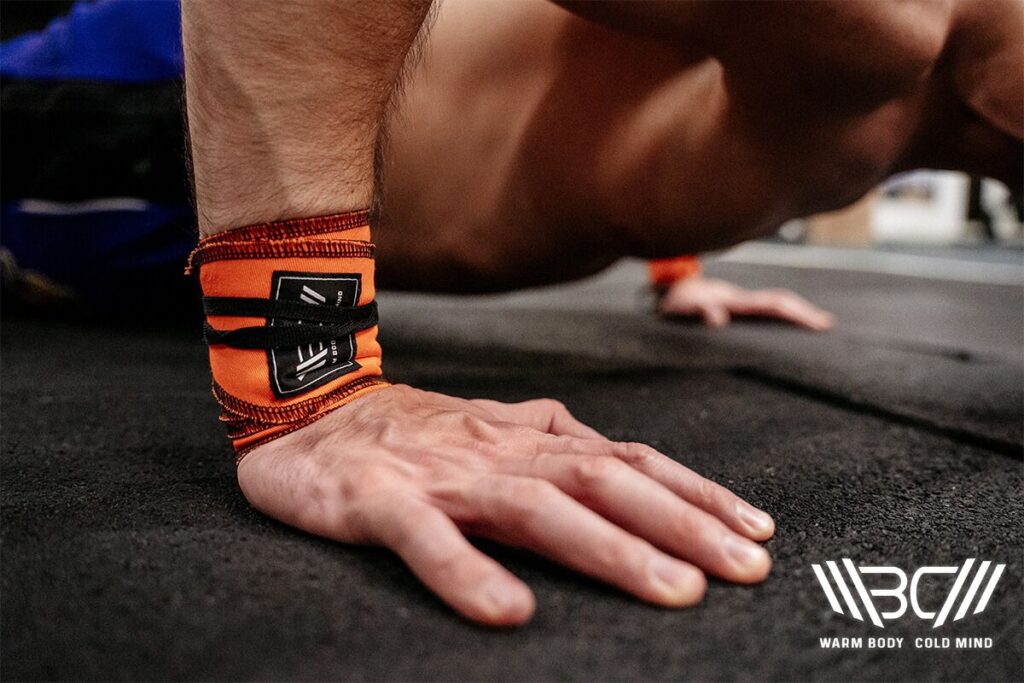
2. Less Pain
Workouts like push-ups are a lot easier to do with wrist wraps, because they alleviate discomfort and pain in the wrist joint. This is especially noticeable for people with wrist issues or discomfort.
3. Better Performance
Stable wrist joints will help you lift heavier weights and do more repetitions in exercises. This can help build strength and muscle.
4. Preventing Injuries
They can be a preventative measure against wrist injuries because they distribute the weight evenly and provide extra support. This is especially beneficial in workouts that subject your wrists to repetitive stress, since the wraps reduce the direct strain on ligaments and tendons.
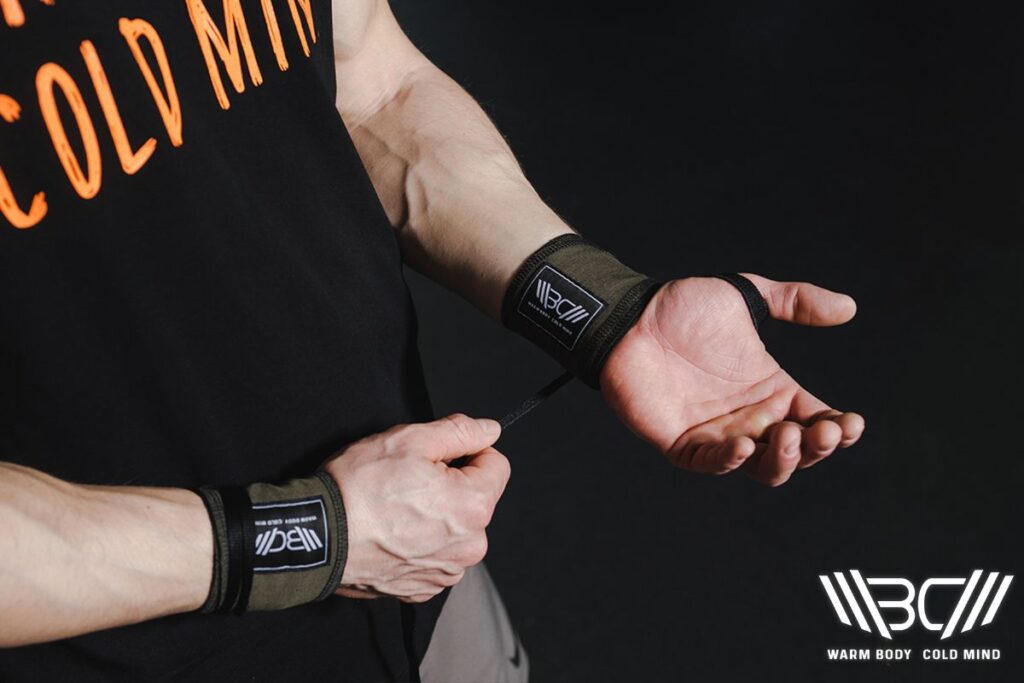
5. Comfort
Wraps can also add a lot in terms of comfort because they reduce the pressure and friction on the wrists during exercises.
6. Better Form
There are not a lot of things that can help you keep proper wrist positioning and alignment like wrist wraps can. And you probably already know how important form is for preventing accidents and injuries.
7. Versatility
This is one of the best things about them – wrist wraps can be used in a lot of different exercises. From weightlifting to yoga, they’re a great accessory for people of all fitness levels.
8. Confidence
When you know your wrists are supported, you feel more comfortable and confident when you work out, and you can safely push your limits and make progress.
Our Recommendation for Wrist Wraps for Push-Ups – WBCM Premium Velcro Wrist Wraps
These super strong, adjustable wraps are a great choice if you’re looking to buy your first pair of wrist wraps or upgrade from the ones you already have. The material is top-notch, and the seams are neat and even.
The support and stability these give are exceptional, and they are perfect for all workouts that can strain your wrists and depend on wrist stability.
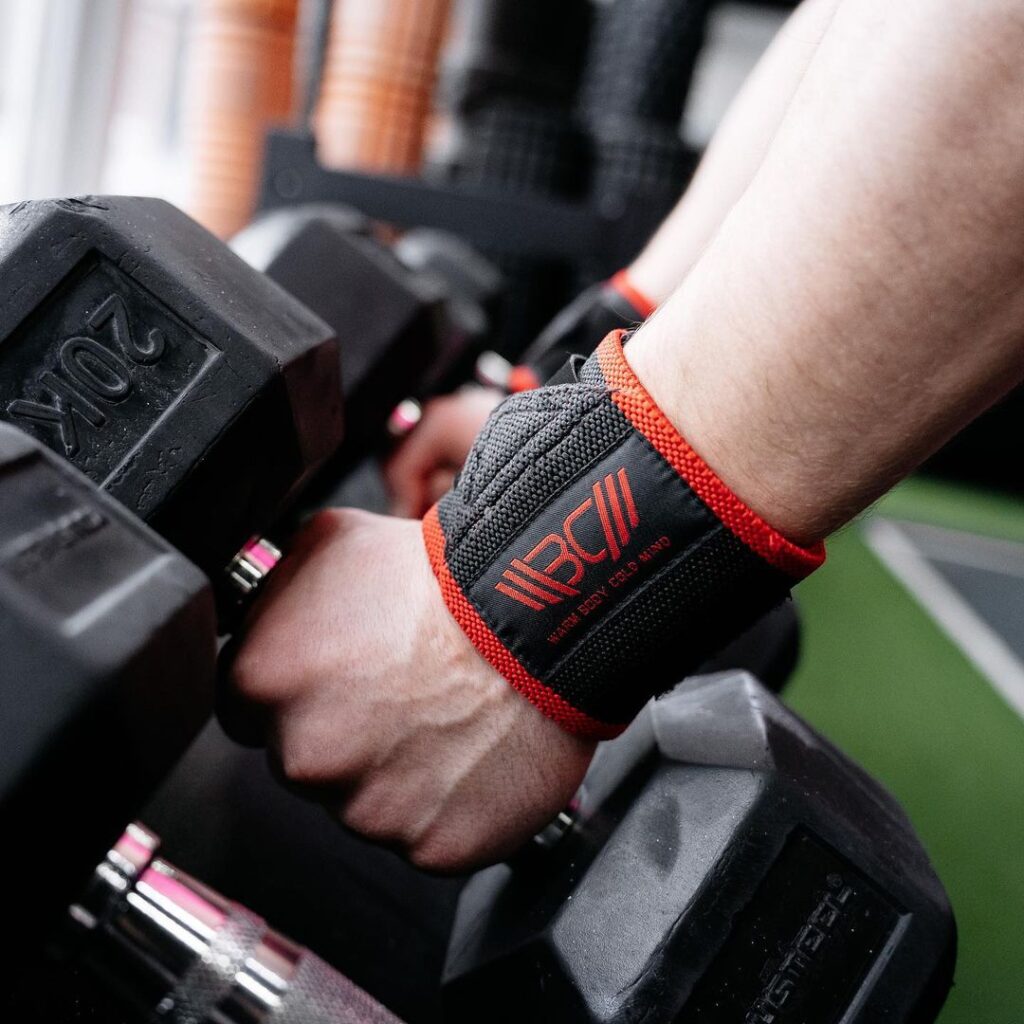
Putting them on and taking them off is a piece of cake thanks to the elastic strap and anchor system, and something that a lot of people are sure to appreciate is the thumb loop, which makes them easy to secure.
At 12’’, they may be a teensy bit too short to provide a ton of support to really thick wrists, but if your wrists are on the thin-to-medium side, they’ll be completely fine. You can always go for the 18’’ version if you feel like you need a little more length.
Overall, these are superb wrist brace support for push-ups and many other exercises, and will be a fantastic accessory for both beginners and professionals.
Pros
- High-quality material
- Durable
- Easy to put on and take off
- Thumb loop
Cons
- 12’’ is too short for thick wrists (18’’ version available, too)
FAQ
Should I Use Wrist Support for Calisthenics?
It can be very beneficial, especially if you feel pain or discomfort during exercises like push-ups or handstands. But you need to use wrist support correctly and not rely too much on it – focus on your form and gradually build up the strength of your wrists.
Can Push-Ups Damage Wrists?
They can if they’re performed with poor form or too much strain. It’s very important to distribute the weight evenly, pay attention to proper wrist alignment and avoid too much bending.
Do Wristbands Strengthen the Wrists?
No, they do not. Their job is to support and stabilize your wrists, which helps prevent strain and injury during push-ups. If you want to strengthen your wrists, you should do exercises that target grip strength, wrist flexors and extensors and whole forearms (like wrist curls and extensions).
Conclusion
To wrap everything up (see what I did there?), now you know a bit more on how to do push-ups without hurting the wrists. Wrist support can be a great addition to push-ups, and to workouts in general. Anyone who is looking for some extra wrist support can benefit from it – regardless of whether they’re beginners or professionals.
What’s your take on this? How do you deal with wrist pain when doing push-ups? What’s your favorite wrist support accessory or method? Do you use wrist wraps, or do you prefer to focus on strengthening your wrists through exercises? What’s the best wrist support for push-ups, according to you?
Leave your comments and opinions, and let’s have an educational discussion!
Wrapping out! (Does that make sense to anyone other than me? :S)
References:
- Charlotte Lillis, “What happens if you do pushups every day?”; Medical News Today, https://www.medicalnewstoday.com/articles/326149 (accessed 18 September, 2023).
- Olga Polovinets MA, Alon Wolf PhD, Ronit Wollstein MD, “Force transmission through the wrist during performance of push-ups on a hyperextended and a neutral wrist”; Science Direct, https://www.sciencedirect.com/science /article/abs/pii/S0894113017301217 (accessed 18 September, 2023).
- Andrea J Fradkin, Tsharni R Zazryn, James M Smoliga, “Effects of warming-up on physical performance: a systematic review with meta-analysis”; National Library of Medicine, https://pubmed.ncbi.nlm.nih.gov/19996770/ (accessed 18 September, 2023).
- Beverly Trevithick MAppSc (Biomedical), Rebecca Mellifont PhD, Mark Sayers PhD “Wrist pain in gymnasts: Efficacy of a wrist brace to decrease wrist pain while performing gymnastics”; Science Direct https://www.sciencedirect.com/science /article/abs/pii/S0894113018302916 (accessed 22 September, 2023).5)
- Pete McCall, “Perfecting the Push-up for All Levels”; ACE, https://www.acefitness.org/r esources/pros/expert-articles/7265/perfecting-the-push-up-for-all-levels/ (accessed 18 September, 2023).
Author: Jacek Szymanowski
Performance architect, S&C movement specialist.
Jacek Szymanowski is a highly respected sports nutrition expert with a Master’s degree in Biotechnology. His innovative approach combines lifting and fighting strategies to help athletes optimize their performance. As a Strength and Conditioning Movement Specialist, he is dedicated to reducing injuries in athletes. His specialist training in Nutrition for Athletes equips him to provide expert advice on dietary habits and nutrition for peak performance.



